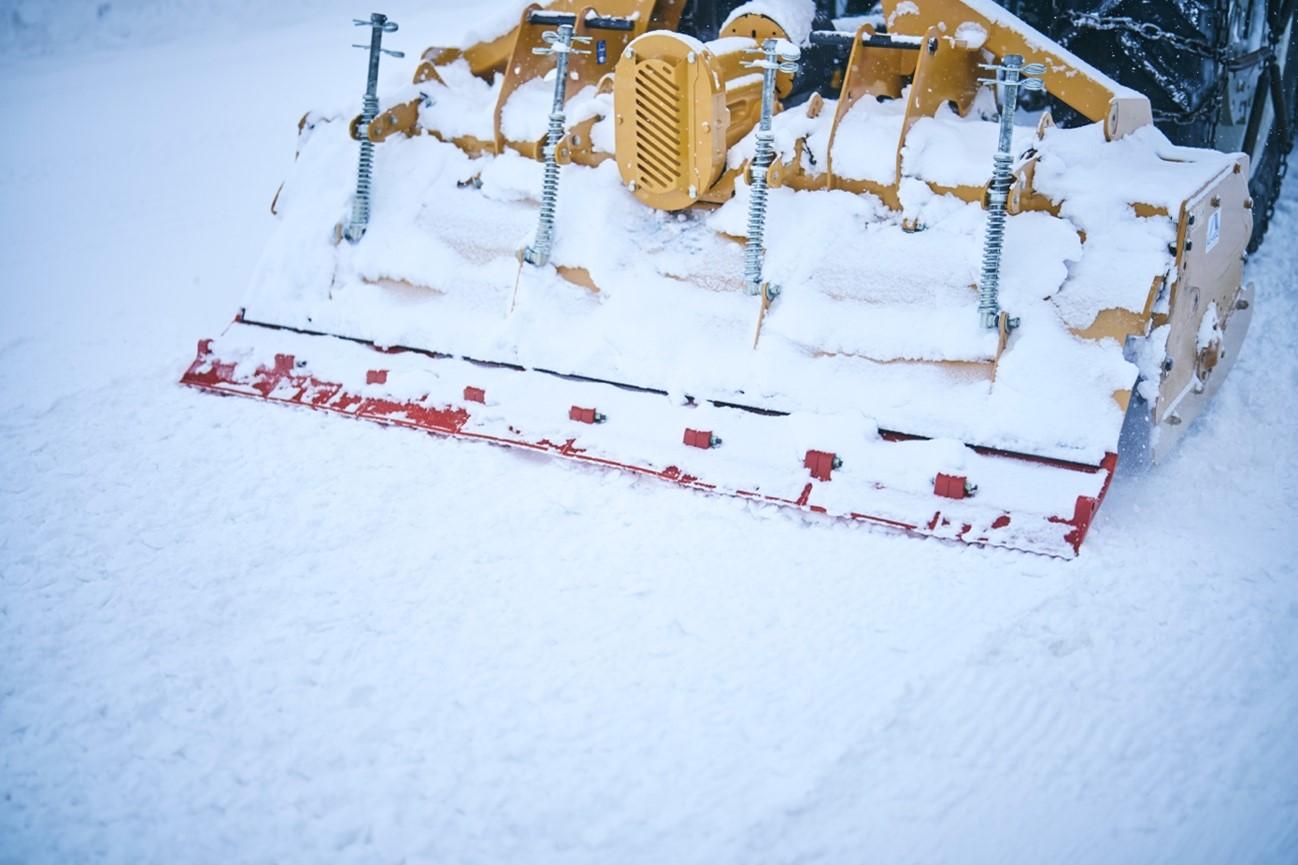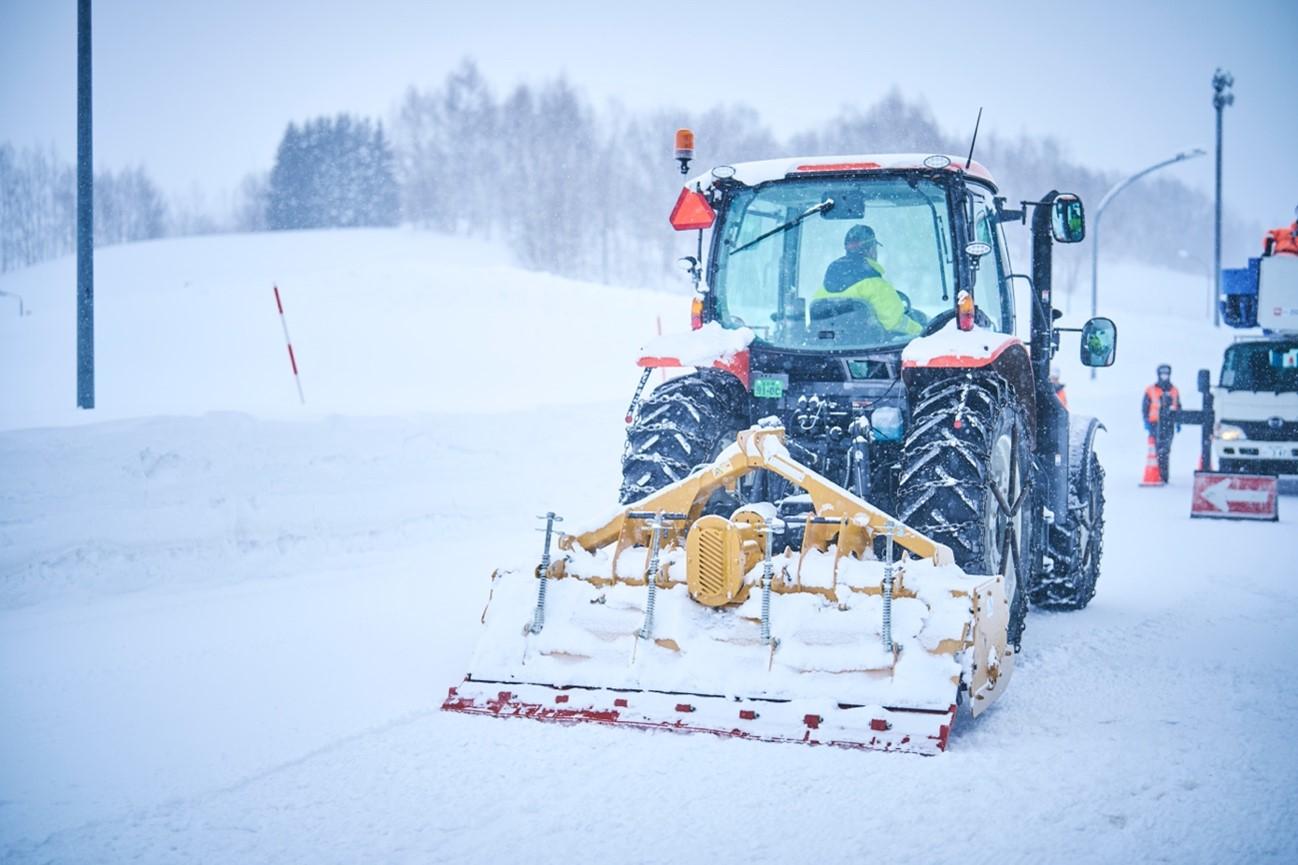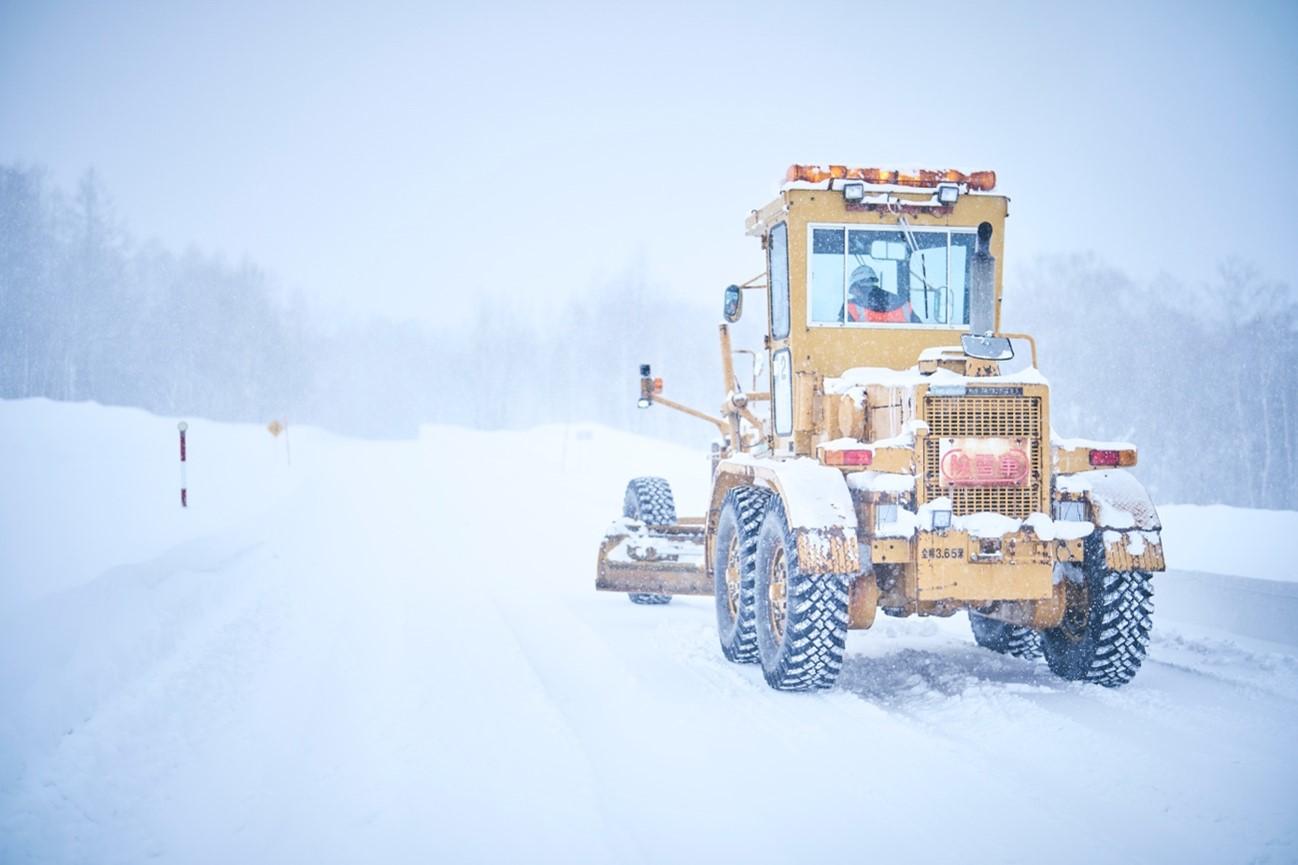
Staying in the -30ºC (-22°F) world of the Shibetsu Proving Ground, this article focuses on late-night operations that play a vital backstage role in making ever-better cars.
Maintenance that has nothing to do with cars?
Next up was “surface roughening,” a maintenance task completely unrelated to driving cars.
Sato
It is a task to make the surfaces where pedestrians walk less slippery.

While maintaining the test courses is certainly important, ensuring that visitors from snowless parts of Japan don’t slip and fall is just as important.
For this work, the team uses agricultural machinery designed for plowing hard soil and tilling fields. The unit is modified and fitted with equipment to flatten the churned snow. This machinery is also used at ski fields to create coarse surfaces.

Finally, we witnessed the process of clearing overhanging snow from buildings. In the winter wonderland that is Shibetsu, vast quantities of snow accumulate on rooftops overnight, forming eave-like masses.
Snow piled up in high places must be removed using elevated work vehicles. While the main purpose is safety, this work is also important for another reason.
Sato
Given the risk of people being hit by chunks of falling snow, our primary objective is to ensure safety.
The other issue is that buildings can be damaged or degraded if hit by large chunks of snow. That’s why we carry out this work on a daily basis during peak snow periods.
Fighting worker shortages with rotary snowplows
Sato was born and raised in Shibetsu, while Kawamura hails from Abashiri, which receives less snow despite being even colder. We asked these two locals, well acquainted with the harsh Hokkaido winters, about what they prioritize when clearing snow or constructing courses.
Kawamura
Safety comes first. For us, the most important thing is ensuring the safety of not only ourselves, but also those involved in the testing.
Our next priority is creating the same conditions every day. When the temperature rises above -6ºC (21.2℉), for example, this means switching to special maintenance methods.
Sato
Recently the temperatures have been getting a bit warmer, which can turn the snowy roads we compact into slush.
At such times we have no choice but to clear, compact, and freeze the snow to prevent it from becoming watery. This process takes extra effort, but having done this for 30 years, we are intimately familiar with Shibetsu’s climate and snow conditions.
At Shibetsu, the NIPPO team is confident in their course-creation expertise. The recent challenge, however, is a shortage of young people to carry on the role.
As Kawamura tells, the key to overcoming this worker shortage is information and communications technology (ICT).
Kawamura
Rotary snowplows are machines that cut through the snow. If equipped with a GPS and programmed to the desired course, they can clear the snow to maintain the same lines day after day.
Because the work requires many adjustments—from driving the machine to setting the direction for ejecting snow—it is handled by skilled operators. But with the recent labor shortages and an aging workforce, GPS has come to play a key role in keeping the course construction process going.

This solution can also prevent machines from going off the road when visibility is poor, and create contours exactly as requested by course managers. We are embracing new technologies to ensure our small teams can operate safely and accurately.
On our late-night visit to Shibetsu, we met the people who strive to keep the daytime cold-climate testing running smoothly. Working in tandem with Toyota’s test drivers to create the roads that hone both people and vehicles, these outside professionals are another key partner in the quest to make ever-better cars.

